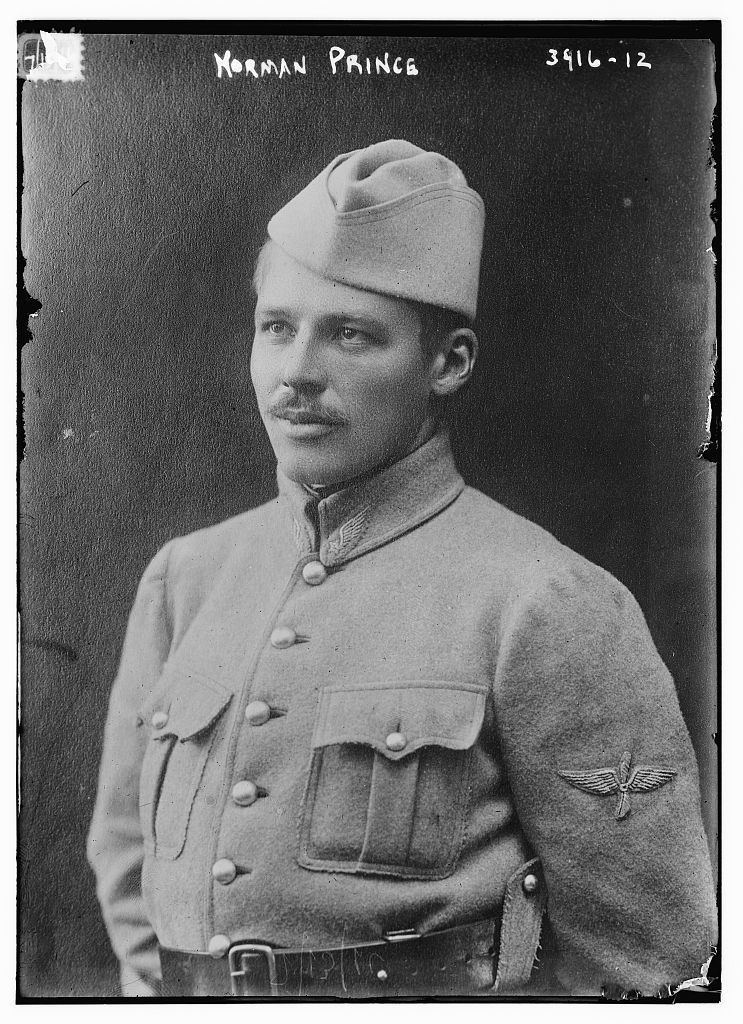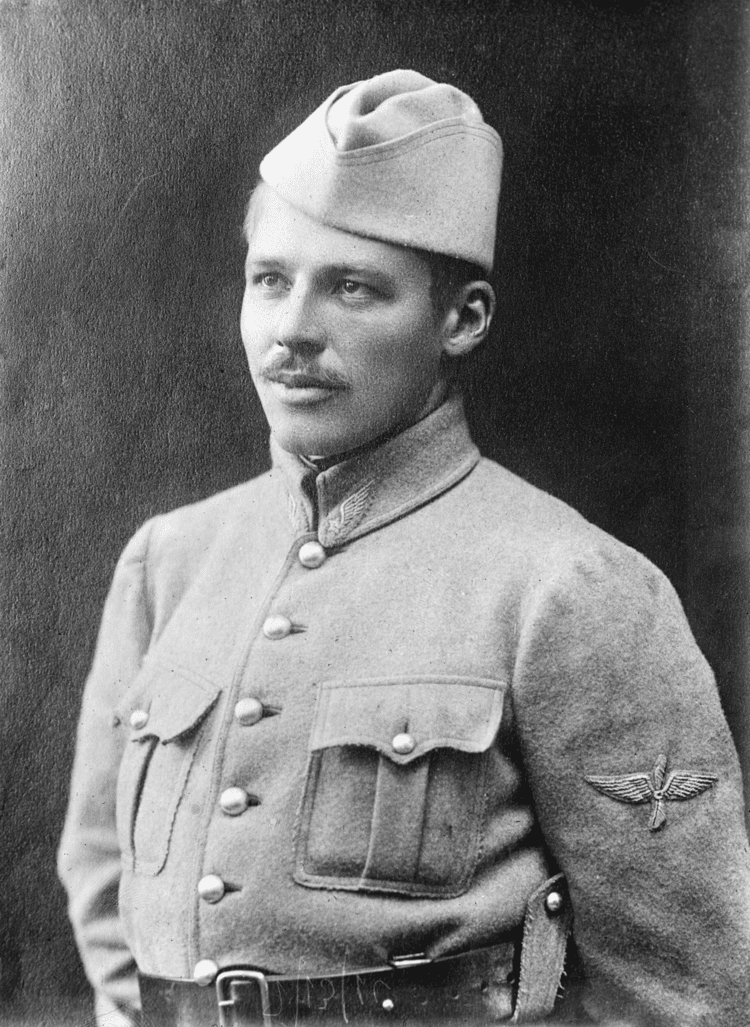Allegiance USA, France Name Norman Prince | Rank Sergeant Years of service August 1915-16 | |
 | ||
Born August 31, 1887Beverly, Massachusetts, USA ( 1887-08-31 ) Buried at National Cathedral, Washington, D.C., USA Service/branch French Aviation Service Awards Croix de GuerreMedaille MilitaireCroix de la Legion d'Honneur Died October 15, 1916, Corcieux, France Place of burial Washington National Cathedral, Washington, D.C., United States | ||
1958 lt norman prince the princemen drum and bugle corps
Norman Prince (August 31, 1887 – October 15, 1916) was a leading founder of France's Lafayette Escadrille.
Contents

Norman prince video
Biography

He was born on August 31, 1887 in Beverly, Massachusetts.
Prince attended the Groton School, graduated Harvard College, cum laude in 1908 and Harvard Law School in 1911.
Prince, under the alias 'George Manor' to conceal his flight training from his father, was the 55th American to be licensed to fly an airplane by the Aero Club of America. He passed his test on August 28, 1911 at Squantum, Massachusetts flying a Burgess with a Wright motor.
Norman was son of Frederick Henry Prince and had graduated from Harvard Law School and was practicing law in Chicago when he joined a group to build and race a plane in the Gordon Bennett Cup Race. They hired Starling Burgess to build their plane in his boat yard in Marblehead, Massachusetts in 1912. In 1910, Norman's family had bought an estate in Pau, France known as "Villa Ste. Helene". The estate, with its house, still stands at 29 Avenue Norman-Prince, and contains a painting of Norman standing next to an aircraft. The year before the Prince family purchased the estate, the Wright Brothers had traveled to Pau, and made many well-publicized flights there, carrying passengers, and training pilots.
In January 1915, Norman, who spoke fluent French, sailed to France, and finally persuaded the French to allow the founding of the American Escadrille (squadron) in April 1916.
Captain Georges Thenault, the Escadrille's commander, credits Norman for conceiving the idea of bringing together his countrymen with some of those of the French Foreign Legion in a squadron of flyers to be initially known as the Escadrille Américaine. He formed the squadron with William Thaw II, Elliot C. Cowdin, Frazier Curtis, and Greeley S. Curtis, Jr. Elliott C. Cowdin, in an article which he published in the Harvard Alumni Bulletin (March 7, 1918) gave the full credit for the formation of this flying corps and for its incorporation in the French flying service to the energy and persistence of Norman Prince.
As an aviator, serving as a sergeant in the French air service, Norman Prince was involved in 122 aerial combat engagements in which he was officially credited with five victories. He was also thought to have brought down four additional hostile planes which were not confirmed. Note - Sources vary as to how many aerial victories Prince had. Estimates range from zero to five.
Prince was awarded the French Legion of Honor, Medaille Militare and Croix de Guerre.
On October 12, 1916 Prince flew as an escort for a bombing raid on the Mauser rifle works at Oberndorf, Germany during which he shot down an enemy plane. Returning to base, his landing wheels hit telegraph cables near his air base and his plane flipped over and crashed.
Prince was severely injured and died on October 15, 1916. On his deathbed he was promoted to sous lieutenant and awarded the Legion of Honor. His body was returned to the United States and buried in an elaborate tomb at the National Cathedral in Washington, D.C.
